| de Havilland Mosquito B.XX, KB 267/AZ-E Steenburgen, Nord Brabant, The Netherlands Tuesday, 19 September 1944 |
The most important thing of all is this cockpit drill business …
All it means is getting to know the position of every tap so that you can fly the aircraft without having to look down for the controls.
– Guy Gibson in his autobiography, Enemy Coast Ahead, published 1946
The fatal crash of a renowned World War II pilot shows aviation in any era is no respecter of persons
On an unglamorous street in an industrial district of Steenbergen, in the Netherlands, a few coloured paving stones mark out a British flag. Grumbling DAF trucks coming and going from a farm machinery dealership grind past this unassuming memorial every working day. Occasionally a tourist pays a contemplative visit.
The reason why is in the name of the street, built on what in 1944 was open land: it is Mosquitostraat. Nearby are Gibsonstraat and Warwickstraat. It is the spot where Wing Commander Guy Gibson and Flight Lieutenant James Warwick died when their de Havilland Mosquito crashed on the night of 19 September 1944.
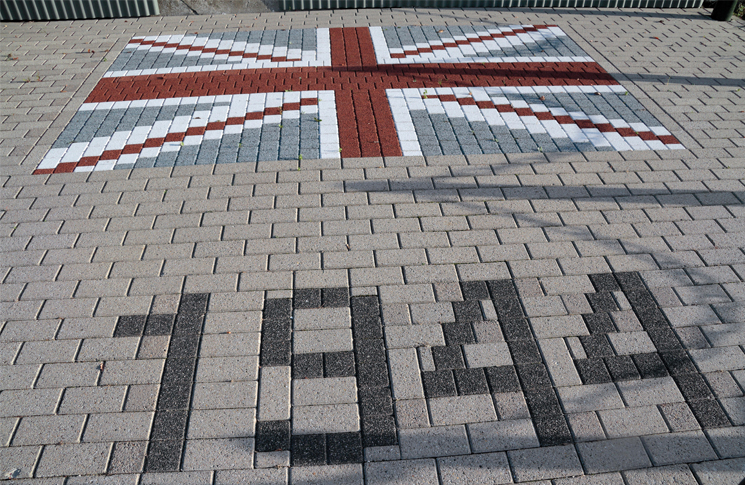
Once more, into the breach
Gibson had been the leader of the bombing raid by Royal Air Force 617 Squadron that smashed 2 dams in Nazi Germany in May 1943. His name would become famous after the 1955 film about the raid, but even by 1944 he had become a celebrity of war. He had been taken off operational flying after the dam raids, which had been his 174th combat flight, and awarded the Victoria Cross. Since then, he had occupied his time with an official morale-raising trip to the United States and Canada, in the company of British Prime Minister Winston Churchill, who informally gave him the nickname ‘Dam-buster’, attended staff college and been posted to the Royal Air Force Directorate for the Prevention of Accidents.
This post was probably a cover for him to write his wartime autobiography. An officer who visited him there found him unhappy and long-haired and, in a letter to a friend, Gibson described the posting in coarse language. The D-Day invasion of 6 June 1944 spurred Gibson to apply to return to operations. By August he was Base Air Staff Officer at 54 Base in Lincolnshire, in northern England. His duties were mainly planning and liaison and he appears to have been under orders not to fly on raids. This did not suit him. An Australian navigator on base described him as seeming like a lost soul. But he wangled his way into observing on 4 short range daylight attacks on French targets and made a few non-operational flights.
On 19 September the 54 Base commander was off-base as was the commander of nearby 627 Squadron, which flew de Havilland Mosquitos as target-marking aircraft. Gibson had logged 9 hours 35 minutes in a Mosquito since his arrival, under instruction/supervision including a session practising the dive‑bombing technique that target marking required. That afternoon an order for a raid came through and as senior officer on base, he took his opportunity – taking over an aircraft, whose regular crew were not pleased.
Gibson had already rounded up a navigator. 54 Base’s navigation leader James Warwick got the job – whether voluntarily, by request or under a direct order will never be known. A Northern Irishman, known by the affectionate, if predictable nickname of ‘Paddy,’ he was skilled and experienced in navigation after 2 tours of duty in Lancaster bombers but had never flown in a Mosquito. Like Gibson, he was off operations. They took off into dim twilight at 1951 hours, destination Mönchengladbach in western Germany.
About 2230, witnesses in Steenbergen saw an aircraft approach the town at low altitude. Several of them noted a light in or near the cockpit, one described it circling. ‘Most accounts agree the Mosquito entered a steep dive in its last seconds,’ Gibson’s biographer Rickard K Morris writes. The aircraft went into a field northwest of the town. There was little recognisable of it or its crew the next morning.
The engines had buried themselves several metres down in the moist polder soil and the wooden airframe was smashed and burnt beyond recognition. Only the grotesque discovery of 3 hands provided any clue about how many were on the aircraft. The people of Steenburgen held an ecumenical service to bury the airmen in a single coffin.
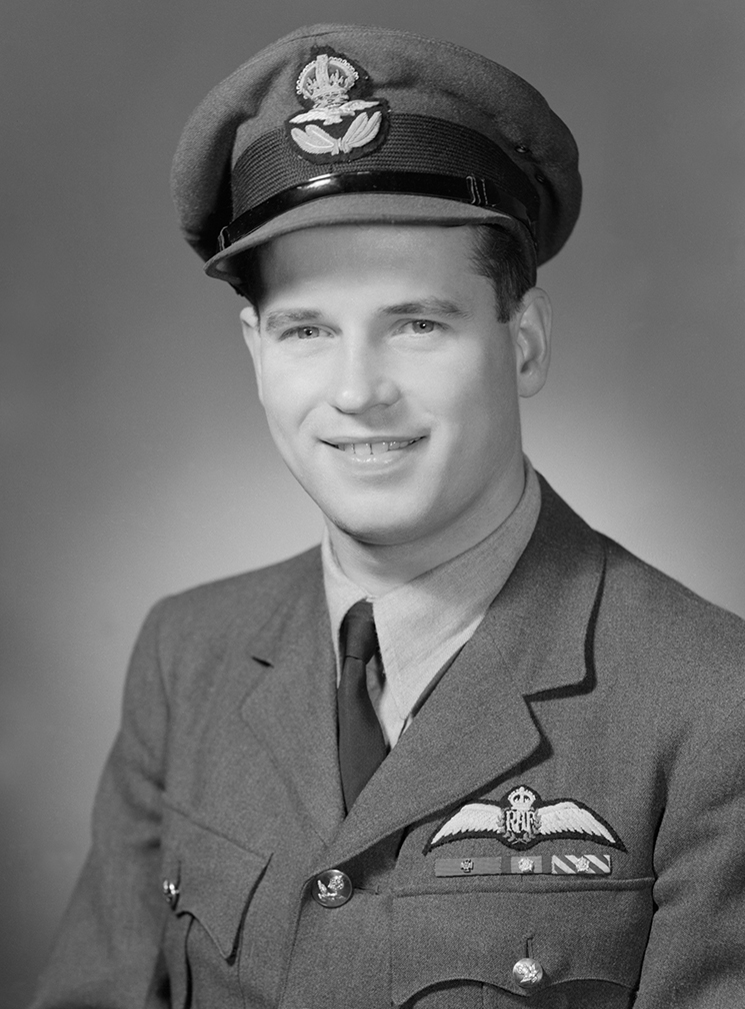
Mystery in the polder
All the evidence about Gibson and Warwick’s crash is circumstantial. The wreckage of the aircraft, when it was recovered in 1985, yielded no clues or signs of battle damage. The remains of the airframe had been unsentimentally disposed of 41 years earlier, in a time of plentiful aircraft wrecks, sad memories and a desire to get on with life.
All the evidence about Gibson and Warwick’s crash is circumstantial.
617 Squadron Association official historian Robert Owen says there are several possible scenarios: ‘There’s a lot of evidence that suggests fuel starvation,’ he says, “but it’s possible that Gibson or Warwick may have been wounded or Warwick killed, or the aircraft damaged by anti-aircraft fire, or the controls may have been damaged. Given that they were returning at low level it’s extremely unlikely that they were shot down by another aircraft.
‘The witnesses on the ground hear the aircraft approaching. It sounds to be running roughly, which suggests an engine problem, possibly caused by a fuel problem. Then they say the engines cut and picked up and there was a jet of flame and the aircraft rolls and dives into the ground.
‘The thinking based on most witnesses was, fuel starvation, a mad scramble in the cockpit to get the fuel right again, engines cut through fuel starvation, fuel flows again, there’s a restart, surplus of fuel which goes to the exhausts, a backfire of flame, which happens with a rich start on a Merlin [engine]. If one engine picks up before the other, you are in an asymmetric situation, which could cause a roll. If you’re not expecting it, you’re low and you’re not experienced in handling the aircraft, you’re not going to catch it.’
Witnesses can be unreliable – in countless civil crashes they have described aircraft being on fire when wreckage proves to be unburnt. But Owen says air-minded Dutch civilians in 1944 would have had familiarity, if not expertise, with dozens of aircraft flying over them every day. And the witnesses’ stories are broadly consistent.
In the eyes of many this was an accident waiting to happen.
Biographer Morris summed up the mood at 54 Base when he wrote, ‘In the eyes of many this was an accident waiting to happen. The sortie had been organised in haste. Gibson was ill prepared. He was flying an unfamiliar aircraft. His navigator had not operated for months. Both were undertaking complicated duties for which they had not rehearsed.’Owen says Warwick’s total lack of experience in the Mosquito adds a human factors dimension to the explanation.
‘You’ve got an experienced navigator, flying with a pilot who is possibly slightly in awe of because of rank, status and reputation. It’s what is now called a cockpit gradient,’ he says. ‘However, the pilot doesn’t have a lot of experience on type – and the navigator isn’t able to question that. He’s not going to have a problem with navigation. But he is going to have a problem with the working environment. And he’s now got other new roles, flight engineer and wireless operator. His workload is increased, in categories that are new to him. He’s going to be working under stress.
‘And the physical environment of the Mosquito is different. Warwick’s experience is on Lancasters, so he’s used to working at a reasonably sized navigation table. He now finds himself squeezed, sitting half behind the pilot with his charts on a small kneeboard.
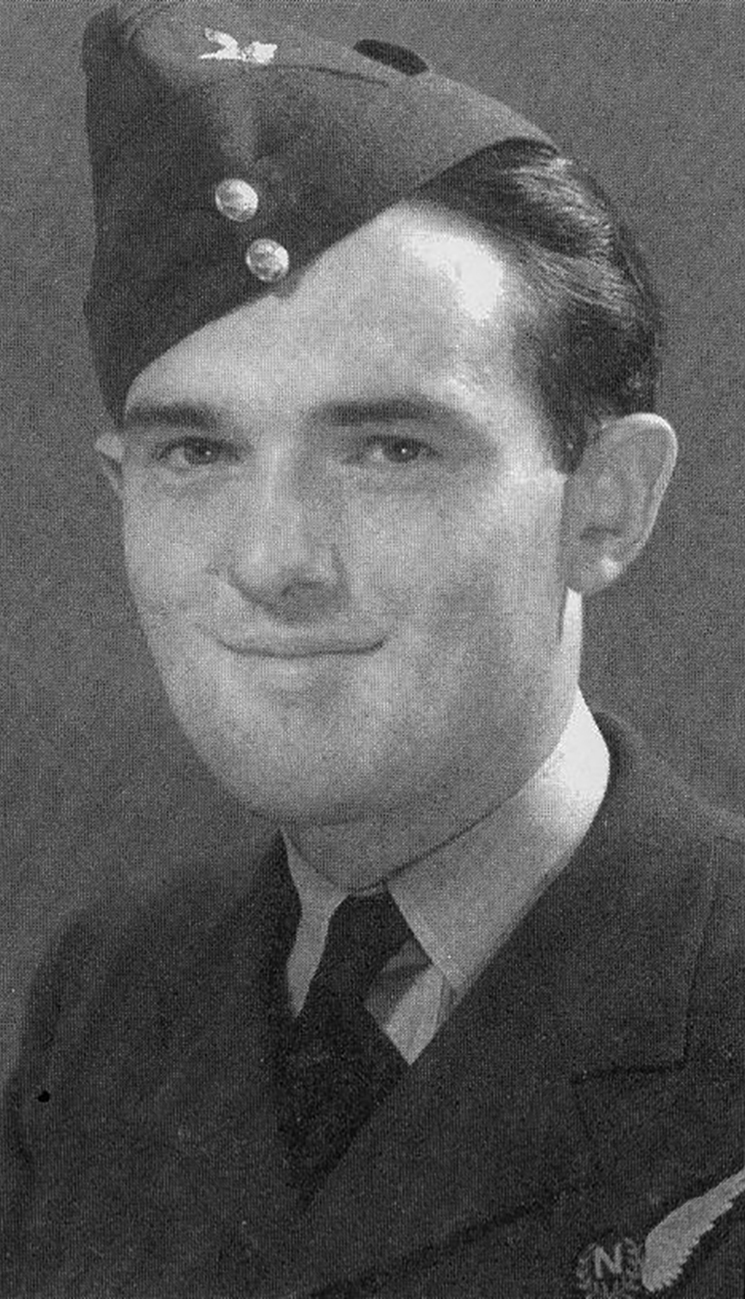
One source suggests Warwick tried to learn all he could before take-off. Dutch historical author Jan van den Driesschen wrote how an engineering officer at 627 Squadron related how he had described the Mosquito’s fuel system to Warwick in a brief tutorial which was interrupted by an impatient Gibson. ‘During my instructions I was rudely more or less thrown out of the aircraft by Gibson,’ the engineering officer said.
The fuel transfer switches in a Mosquito B.XX were on the rear bulkhead of the cockpit. Owen says that location added considerably to the difficulty of the task. ‘Bearing in mind the confines of the cockpit, it’s a bit like reaching into the back seat of the car while moving – very difficult,’ he says. ‘Imagine then doing it in the dark, under operational conditions and possibly under time pressure because you’ve been caught unawares or preoccupied with another task because so many things are new on this flight.
‘It’s total speculation but all these what-ifs and maybes add up to a picture of unfamiliarity and high workload.’
Technicalities
Warren Denholm can add a little precision to the speculation. His company Avspecs Warbird Restorations of Ardmore, New Zealand, has built 3 Mosquitos from de Havilland’s blueprints.
‘There’s not much to it from a pilot’s perspective,’ he says about the aircraft’s fuel system.
‘You take off on main tank, switch to the outer tanks and deplete them before switching back to the mains.’
The main inboard tanks feed into a single gallery that feeds both engines, Denholm says, while the outer tanks only feed that side’s engine.
Denholm also notes a possibly significant engineering detail. Canadian-made Mosquitoes such as KB267 used American Packard Merlin engines which had a pressure carburettor – in effect, a single-point fuel injection system. Restarting these involved an additional step – switching on a fuel pressure pump – compared to restarting carburettor‑fed Merlins. Gibson had done the majority of his scant Mosquito hours on Packard Merlin B.XX Mosquitos. But his most recent flight before the raid had been in an earlier B.IV version using British carburetted Merlins.
There is little to be gained from attempts to reconcile Gibson’s flight path and the Mosquito’s fuel capacity with the possible tank change point and the location of the crash. There are too many variables, including how full the tanks were, the flight path flown, winds and how long Gibson loitered over the target.
Battle damage could have changed the fuel management situation, Owen says. ‘I know they had self-sealing tanks, but self-sealing wasn’t perfect, there could still have been a slow leak or a nicked fuel line and either could have led to a fuel starvation at an unpredicted time in the flight.’
Shootdown theory
In 2011 a wartime history magazine published a story based on the taped testament of a Lancaster mid-upper gunner, Bernard McCormack, who died in 1992. McCormack said he had been told that an attacking aircraft he had reported as a German Junkers 88, had been Gibson’s Mosquito. Newspapers and broadcasters adopted the shootdown theory uncritically, but Owen is not convinced. ‘The combat report from that night – the original document – does not equate with the tape-recorded recollection,’ he says.
‘The combat report describes a Junkers 88 firing on the Lancaster. That’s not Gibson – his aircraft had no guns,’ Owen says.
Gibson’s experience in the air force was rare. He was a former bomber pilot and a former night fighter pilot. ‘He of all people would have been wary of joining a bomber stream on way home from raid,’ Owen says.
Owen says it was also unlikely Gibson would have been high enough to encounter a returning bomber.
‘We don’t know exactly what route Gibson took but I think we’re more certain on the altitude, which gives a problem to the shootdown theory,’ Owen says. ‘We know that Gibson rejected the instructions to return at medium altitude. He told another officer, “I’m coming back at low level”. That fits with what the witnesses saw at Steenbergen. The aircraft is at low level, approaching from Germany.’
The specifics of the case are as obsolete as the Mosquito, but the generalities are as timeless as that elegant design.
Lest we forget
What can we learn from this 78-year-old crash? The specifics of the case are as obsolete as the Mosquito, but the generalities are as timeless as that elegant design. It’s a vivid reminder of the importance of fuel management, flight planning, type experience, and how the sky in war or peace is no respecter of persons. Looking back, the influence of organisational culture is starkly clear. Death from enemy action was a frequent visitor to wartime RAF (and RAAF) squadrons, which in the stoic spirit of the time saw their role primarily as fighting. And fighting, unavoidably meant dying. Added to the losses of war was the pervasive 1930s notion that aviation was an inherently dangerous activity (which it is, but in the modern world its risks are understood and managed). A safety culture of risk assessment and hazard mitigation stood little chance of thriving in this environment. Despite this, some pilots made safety a personal priority; a successor to Gibson’s command at 617 Squadron, Leonard Cheshire, had a practice of sitting blindfolded in the cockpit of his aircraft reciting drills and learning the position of controls by touch. But, as Owen notes, under wartime necessity, Cheshire also flew new aircraft types into action with what modern instructors would consider shockingly little type experience.
The other killer factor still out there is emotional bias and its effects on decision-making. Gibson wanted to fly on ‘ops’ again, very badly, and this desire undoubtedly affected his judgement. Morris speculates part of his fierce desire to return to the war may have been because ‘Churchill had given him unpublished information about the behaviour of the Nazis and the industrialised murder of the Jews’. Motivations do not come any more noble, and Gibson, like all who flew in the bomber offensive, was brave beyond modern comprehension.
The other killer factor still out there is emotional bias and its effects on decision-making.
Our emotional biases in peacetime are petty by comparison, and therefore should be easier to examine and discard. No matter how much we are tempted to take off into dark and stormy – but peaceful – skies, or stretch our qualifications and experience to breaking point, we have no dam-busting excuse.

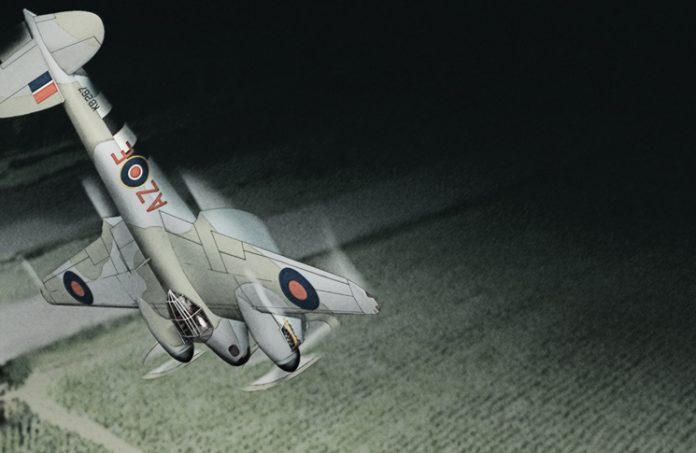
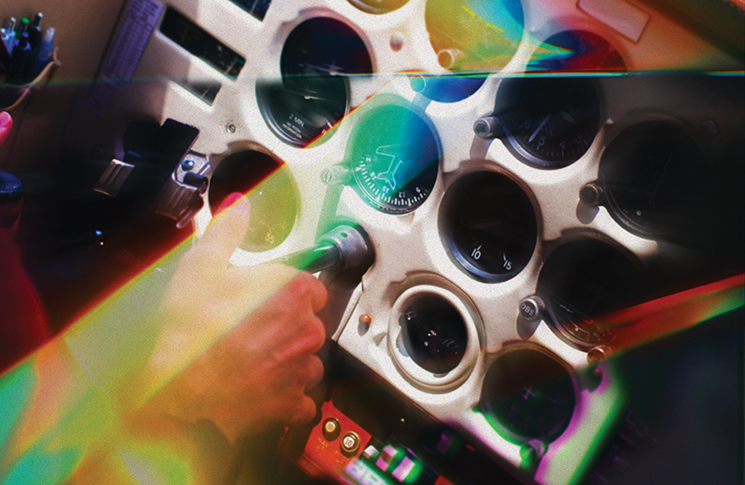



A wonderful, thoughtful piece on timeless topics –
They shall not grow old….
Thank you!
Very interesting indeed
Very interesting indeed nicely written
This article appears to be almost entirely speculative and is repeatedly misleading about the known facts of Guy Gibson’s tragic death. The evidence that he was mistakenly shot down by a Lancaster, QR-V from 61 Squadron, is not circumstantial, nor is it just based on an anecdote from a former Lancaster mid-upper gunner but is in fact well documented in the RAF’s records for the raid on Monchengladbach on September 19th 1944. The Bombing Campaign of World War Two was probably the most comprehensively documented military operation in the history of human conflict. Every significant event witnessed by aircrews on every raid was noted down during a raid and reported shortly after landing. These were the records of eye witnesses written down at the very time the events unfolded.
After de-briefing, the data from different Squadrons was amalgamated in “Z” reports which included : “Aircraft Seen Shot Down”, whether downed by fighters or flak, with the geographical co-ordinates and time as noted down by the crew as they watched it happen.
Three separate Lancaster crews from three different squadrons recorded independently what can only have been Guy Gibson’s fatal crash at the time that it happened with their reports being filed within hours of landing by their different squadrons’ intelligence officers. Their records of the encounter were, of course, kept secret for decades after the war but are now in the National Archives at Kew and even available online. First, there is the 61 Sqn Combat Report which is easily overlooked as 61 squadron’s ORB misleadingly states that “no fighters were encountered” on that night. This combat report was hidden away in the ORB’s appendices. It states that on September the 19th the mid upper and rear gunners on Lancaster QR-V from 61 Sqn fired 600 rounds and probably destroyed a Ju 88. The combat report gives the time as 22.25 and location as just at the Dutch shore over what is now the Kwade Hoek National Park. That is just 4 minutes 40 seconds flying time at Mosquito cruising speed from Steenbergen where Gibson crashed. At roughly the same time, a Lancaster from 106 Squadron (ironically the Squadron that Gibson led before 617) reported seeing an aircraft beside them at 9000 feet “falling in flames” and the location was given as 51 48N 04 05E. So the location was just one and a half minutes flying time away from QR-V’s Combat report’s co-ordinates. In the final piece of the jigsaw, a Lancaster crew from 97 Squadron reported seeing an aircraft “shot down” at 22.19 at 11000 feet and “as it burst on the ground a red light resembling a TI (Target Indicator) was seen to burn”. The coordinates given, 51 35N 04 20E, are the coordinates for STEENBERGEN! It’s a known fact that Gibson’s Mosquito was carrying RED TARGET INDICATORS which HUNG UP and had not been dropped at the target. This was, without a doubt, Gibson’s Mosquito “seen shot down” and burning on the ground.
The timings of the THREE independent reports may not be exactly the same but they are absolutely within typical margins of error for Z report sightings of the shooting down of known lost aircraft where the exact crash site has been identified. One does not have to look far to see exactly those small variations in combat records. Other planes returning on that same raid on September 19th 1944 were also “seen shot down” by other crews and their timings and location fixes vary by the same small differences as do the three reports above, but in each case can only refer to the same lost Lancaster, whose crash site is known. Why, one wonders, has exactly the same kind of evidence (from the same raid) recorded at the known time of the crash and in the vicinity of Gibson’s known crash site never been looked at and treated in the same way?
Could there be any alternative explanation for this plainly convergent evidence?
1. Could it in fact have been a Ju 88, that QR-V spotted and shot at?
The world’s foremost Luftwaffe Night-fighter expert, Dr Theo Boiten, confirms that all the Luftwaffe records for that night and that area exist and there is no record of any Ju88 shot down or even damaged nor any record of a German plane reporting any kind of encounter with any British aircraft in that location at that time on that date. If a Ju 88 had been struck by gunfire or even fired at by a Lancaster on that night in that area it would have been recorded in an Abschussmeldung (Luftwaffe Combat report). Theo Boiten has published many volumes of these collected Luftwaffe combat reports. He also states that the actual crash site of every single Luftwaffe plane shot down over Holland in WWII is known. So the answer from the Luftwaffe’s meticulously recorded documentation is clear. No German plane fell in that area on that date at that time.
2. QR-V’s crew’s combat report says that the “Ju 88” fired at them, but Gibson’s Mosquito was unarmed. In 1943, as noted by Bomber Command’s foremost historian, Martin Middlebrook, an Order went out to all Air Gunners saying that they should never fire at another aircraft unless it fired at them first (to avoid friendly fire incidents). So QR-V’s gunners would have been bound to have ticked that box to avoid any recrimination. “Four engines – good, two engines – bad” and “shoot first and ask questions afterwards” were the watchwords of many air gunners as chillingly described in Lancaster gunner John Wainwright’s –book “Tail End Charlie” and the works of Jack Currie and Middlebrook. Often, where Combat Reports state the “fighter fired first”, it is obvious from the distances given for the points at which the opposing planes’ opened fire that it had not.
3 Another bomber reported seeing a twin engine enemy aircraft near Rotterdam at 22.27. However, that sighting of a twin engine enemy aircraft didn’t record it being hit or shot down. And there is no record of any German twin engine plane lost or damaged near Rotterdam, just as there is no record of a Ju 88 or for that matter any other Luftwaffe aircraft shot down or even damaged anywhere in the Steenbergen/Dutch coast area at that time on that night.
4 Why did the “Ju 88” have its navigation lights on, as the Combat report records? This is yet more corroboration that it was Gibson’s Mosquito as it was common and well documented practice for RAF crews to turn their nav lights on over the North Sea to avoid collisions, or even to flash their lights to show another crew that they were friend not foe rather than use their IFF radar which could be detected by the enemy. In the secretly recorded tape of the QR-V air gunner which alerted me to the evidence in the National Archives, he says that the Intelligence Officer said to the crew: “How do you know it was a Ju88? Supposing it was a Mosquito and his radar was bust – he’d only want to follow you home wouldn’t he?”
As for the entirely speculative fuel tank theory, it is hard to believe that anyone can still posit it let alone believe in it. While Warwick may have only had experience on Lancasters, Gibson was experienced on a vast range of other aircraft. Since gaining his “Wings” in 1937 he had flown single engine Hawker Hinds, 37 missions in twin engine Hampdens, 99 sorties in twin engine Beaufighters, further sorties in twin engine Manchesters, Blenheims and Lockheed Lightnings and piloted Mosquitoes on at least two long trips. One of his Mosquito trips was to observe a raid on Creil in France involving a flight of 608 miles there and back, another was to Scatsca in the Shetland Islands, a distance of 499 miles.
When I wrote the article for Britain At War magazine, to my amazement, I discovered that none of the proponents of this theory had ever bothered to check the simple crucial facts – how much fuel was in the relative tanks? How far would the plane be expected to fly before the switch had to be made?
In a Mosquito, the pilot was supposed to take off on the Main Tanks then use up the fuel in the Outer Tanks first before switching the fuel lines back over to the main tanks.
Gibson had flown at least two long trips on Mosquitoes, so he would have had to have switched between the tanks on both of these flights. He would have had to have known about the procedure. In fact, the procedure would have been second nature to him. Gibson was one of the RAF’s most experienced pilots. One of the reasons he had survived so many missions – more than 170 – up to September 1944 was the fact that he was meticulous about knowing his aircraft and ensuring they were serviced properly. It was one of the reasons for his reputation among Ground Crew as a hard task master (as his WAAF driver, the late Eileeen Albone, explained to me).
He would have been very familiar with switching between different fuel tanks. As mentioned before, he flew 99 operations on Beaufighters which had exactly the same system as a Mosquito of outer wing tanks and inner main tanks and the need to switch between the two sets in exactly the same sequence. On a Beaufighter the outer tanks held 174 gallons of fuel and the inner tanks 376 gallons. On a Mosquito the outer tanks held 116 gallons and the inner tanks held 336 gallons. On a Lancaster Gibson would have had had to have switched between 4 of its 8 fuel tanks as they emptied, while the Flight Engineer operated the cocks for the rest. A 107 Sqn Pilot, Richard Leven, went from Lancasters to Mosquitoes without a conversion course because, as he recounts in ‘My Flying Circus’, “My [previous] Blenheim experience qualified me for Mosquitoes…. I flew the Mosquito three times before setting out on my first operation [a V2 site]).”
But, even if on the night of the 19th September 1944, Guy Gibson and Warwick didn’t know where the cock to switch fuel tanks was or Gibson had somehow forgotten about the procedure that he was so familiar with on other aircraft types, the theory doesn’t stand up to sustained scrutiny.
The Mosquito flying at 230 mph did around 2.5 mpg to 2.75 mpg. Simple arithmetic tells us that the 116 gallons of fuel in the Outer tanks would give it a max range of around 290 miles. The target, Monchengladbach was some 320 aeronautical miles from Lincolnshire. Even a primary school child could see that if Gibson had been using the outer tanks and failed to switch when they ran out, he would have crashed before he even reached the target, not on the way back at Steenbergen.
Conversely, if he had simply taken off on his outer tanks and used only them to fly to the target he would have had a range of 837 miles. He had flown only 326 miles to Monchengaldbach – flown around the target – then flown 95 miles to Steenbergen. A total of 421 miles plus some miles flying around the target area. Clearly and indisputably, if he had been flying on the main tanks he would not have run out of fuel at any point in the mission.
Despite these readily available data and calculations, expert after expert has explained the crash with this entirely implausible theory. Now we have desperate attempts to resurrect it by suggesting that maybe the tanks weren’t properly full at take-off – on a Master Bomber/Target Marker’s plane for a raid on Germany? Really? That would be almost taking us back to the ludicrous ‘sabotage by ground crew’ theory. If KB 267’s self-sealing tanks (the remains of one of which I have held in my hands) had been damaged by flak or night-fighter combat over the target – for which, of course, there is no evidence whatsoever – the most operationally experienced pilot in the RAF would surely have noticed the fuel gauges dropping early on in the flight home and could have landed in Allied held territory (the bulge towards Arnhem) which he had flown over on his way to the Dutch coast and home.
The evidence from Dutch eyewitnesses was not contemporaneous, but was actually recorded in 1977 by Andy Saunders, a very respected Aviation Historian. It was not recorded in 1944 as one could be forgiven for thinking by the way it is presented in this article. One witness, S.C. Bastinanse, states that, before falling, the plane was heading West (i.e. in the direction of allied occupied territory) “at a height of 3000 to 5000 feet” (i.e. up to almost a mile high) and, as would be expected from a plane crashing from that height, he says that an engine part was buried, “at a depth of 5 meters” in the soil. Another witness JA van Oers also describes how the engines, “went deeply into the solid clay.” I can testify from visiting the site that the van Riet’s farm has the thickest clay soil I’ve ever come across (and I live in South Lincolnshire). But rather than rely on civilian witnesses, the Royal Netherlands Airforce’s own Aircraft Recovery Unit who excavated the site in 1985 led by the late great Gerit Zwannenberg, to whom I spoke some years ago, found engine parts at 3 metres deep in the very heavy clay soil. He was adamant that they had found no evidence of fuel starvation or fuel cock mismanagement whatsoever.
It is a very sad and obviously embarrassing fact that “Friendly Fire” or “Blue on Blue” was a common but frequently covered up occurrence in WWII. The very first RAF plane shot down in World War Two, on Day Three of the conflict, was a slow but sturdy Hurricane shot down by a Mark 1 Spitfire in the infamous “Battle of Barking Creek. Some of the official records of that disaster are still kept secret today! Brian Cull, who was compiling a history of Friendly Fire in WWII estimates that a staggering 20% of all Allied planes shot down in that conflict were unintended victims. Cull’s research revealed that while, “most RAF Squadron Operational Record Books acknowledged these tragic accidents, some did not. Some units even appear to have made attempts to cover up such incidents to the extent that entries were omitted. In some cases relevant combat reports were removed from the records.” This appears to be what happened in the case of 61 Sqn’s ORB and the QR-V combat report.
As Gibson points out in his autobiography Enemy Coast Ahead, Friendly Fire was more of an everyday occupational hazard than any kind of unusual event, “This sort of thing happens in all forms of aerial warfare.” Gibson’s loss wouldn’t even have been the only Friendly Fire incident on that smallish raid to Monchengladbach on 19th September 1944! A Lancaster from 44 Squadron, on the way home, reported that another Lancaster approached them from about 300 yards above, then “moved to the starboard beam and opened fire from the mid upper turret- about a three second burst.” The 44 Sqn Lancaster – the potential victim – corkscrewed at which point the report concludes, with tangible relief, “the attacking Lanc disappeared.” (So much for the Order that air gunners must only open fire after they had been fired upon themselves).
And finally, of course, it was a Mosquito, a brilliant plane but notoriously vulnerable to Friendly Fire. The USAAF who used Mosquitoes had to paint the tailplane red to avoid their own gunners shooting them down. There is even gun camera footage on You Tube of a USAAF plane shooting down a misidentified Mosquito.
I do not believe it pays proper tribute to heroes like Gibson and all the men of Bomber Command who fought for our freedom to disregard evidence or obfuscate the truth about war, however painful or embarrassing it might be.
Hear hear.
Brilliantly written, informative, brutally honest and sincere.
Age shall not weary them, nor the years condemn.
Thank-you, JC. I’m currently reading ‘Enemy Coast Ahead’ and agree with your sentiments.
I know that Air Marshall Harris stated his belief that Gibson’s aircraft had suffered a structural failure (as some Mosquitos undoubtedly did) but I suspect he either didn’t know the actual cause or could see no good reason for stating the true cause of Gibson and Warwick’s deaths.